Printmaking Jigs With the Laser Cutter
by wolfCatWorkshop in Craft > Printmaking
9561 Views, 90 Favorites, 0 Comments
Printmaking Jigs With the Laser Cutter
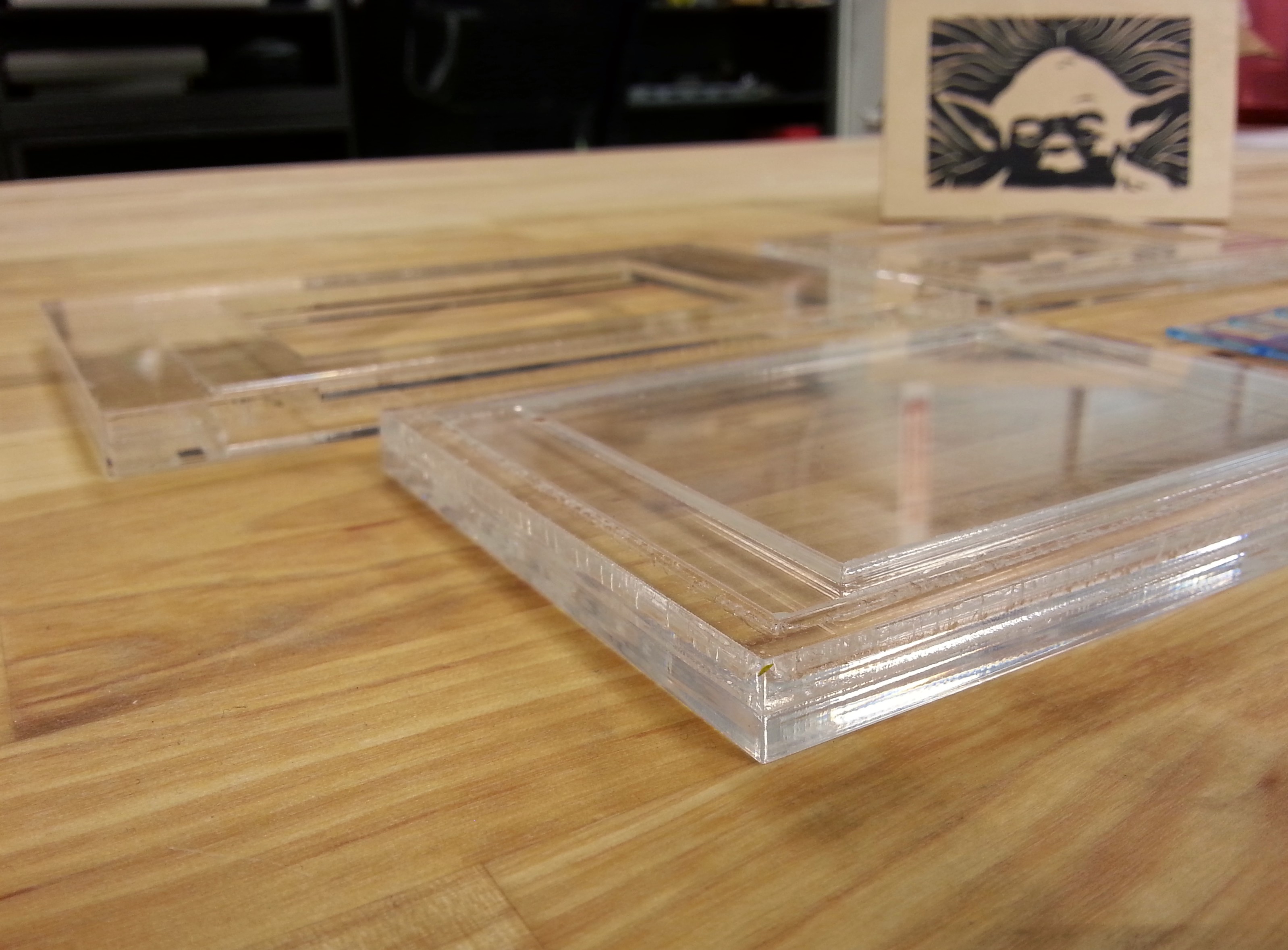
Hi there laser cutter enthusiasts!
In this instructable I want to show you how to build a simple jig that can help you reproduce your printed art efficiently. I've used this method to print on stickers, postcards and small pieces of plywood. I also want to show you some variations that can help you print patterns and combine different designs.
I really enjoy creating jigs for all sorts of things, and the laser cutter is fantastic for this task. It's versatile and the path between ideas and objects feels really easy. It's like the pencil and eraser of CNC machines. There are several wonderful instructables out there that explore lasers and printing, the ideas I'm about to show you can be combined with many of those techniques.
Lets get started:
Gather Your Materials and Choose Your Dimensions:
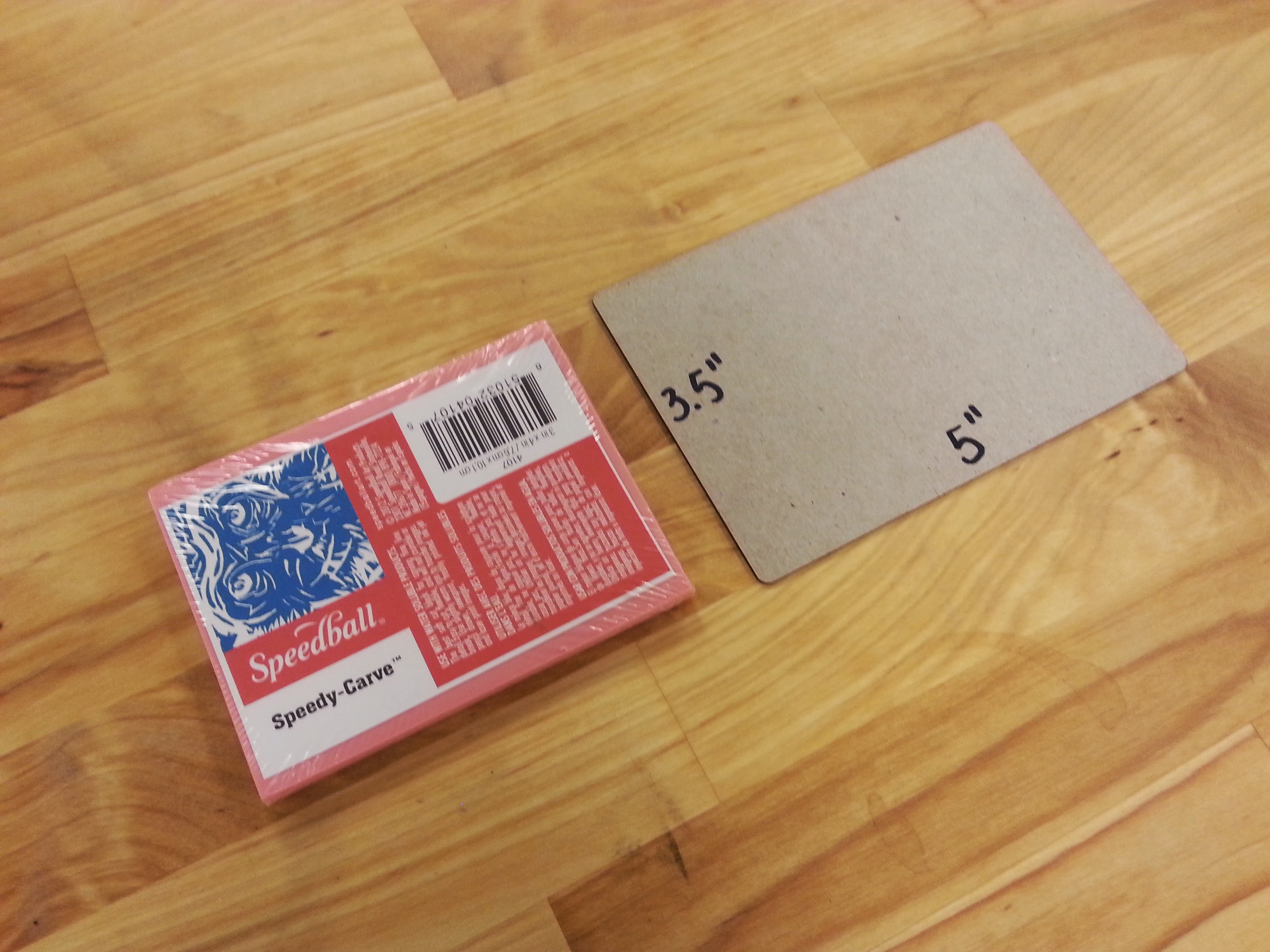
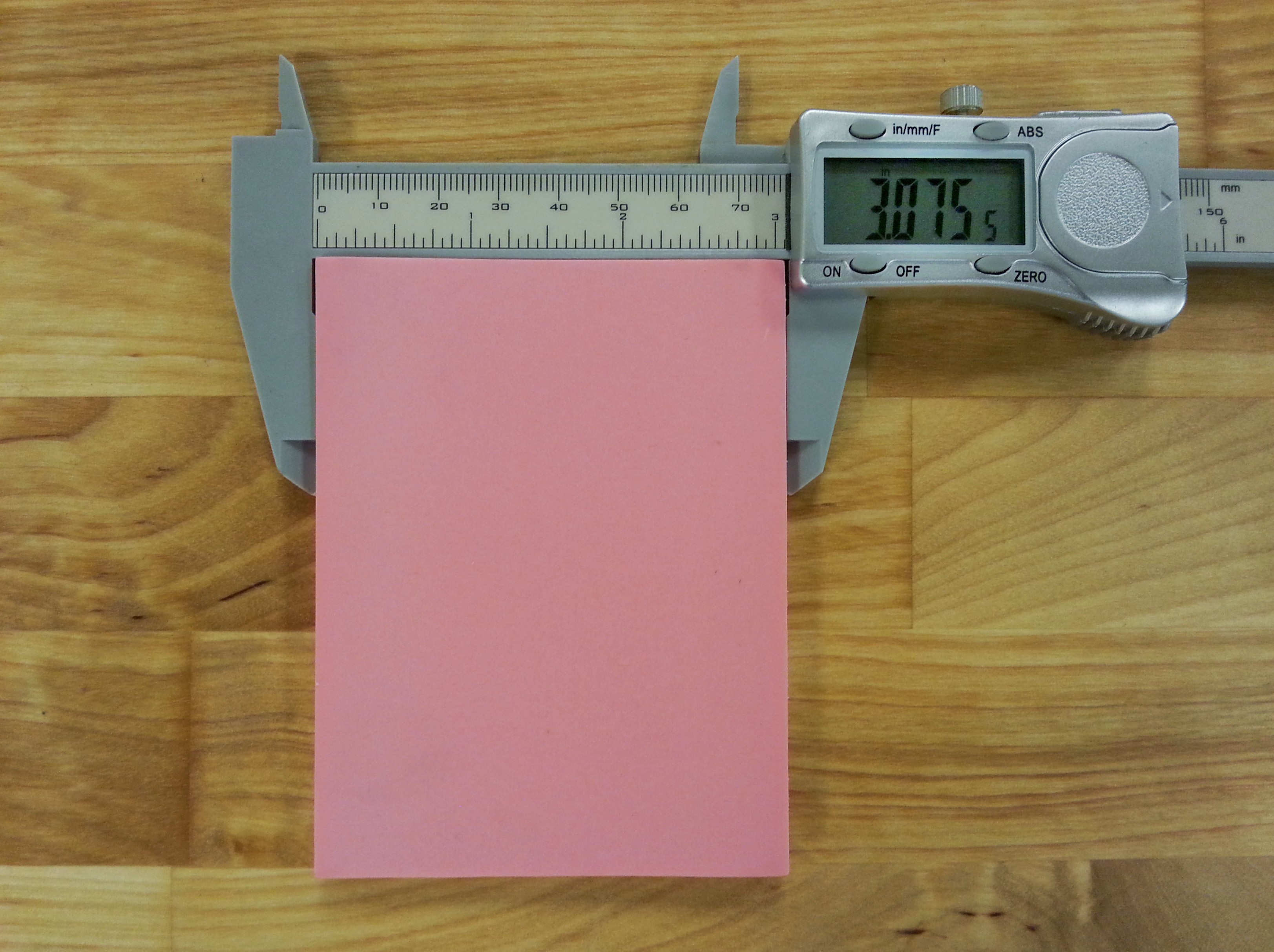
Your basic materials for making the jig will be:
- Your choice of paper (such as cardstock or stickers)
- 0.20 inch thick acrylic (5mm)
- Carving block
- Acetone
In this example we will print the smallest postcard allowed by the United States Postal service. That is 3.5 inches by 5 inches (8.89cm x 12.7cm). And our printing block will be 3in x 4in (7.6cm x 10.1cm). This is a commonly available size. For this project you need a piece of acrylic that is 6in by 9in (15.24cm x 22.86cm).
Since the laser cutter is very precise we want to measure the actual dimensions of the materials. Sometimes the sizes given by the manufacturer are just nominal. My paper was exactly 3.5in by 5in but the block I bought was slightly bigger than advertised on the label, this is normal. My block was 3.07in x 4in.
Be as precise as you can but don't worry too much, if the fit is too tight you can manually carve your block later.
So to recap my final dimensions were:
- Paper: 3.5in x 5 in (8.89cm x 12.7cm)
- Carving block: 3.07in x 5 in (7.79 cm x 12.7cm)
You will need access to the laser cutter for about 10 minutes of cutting time.
Prepare Your File
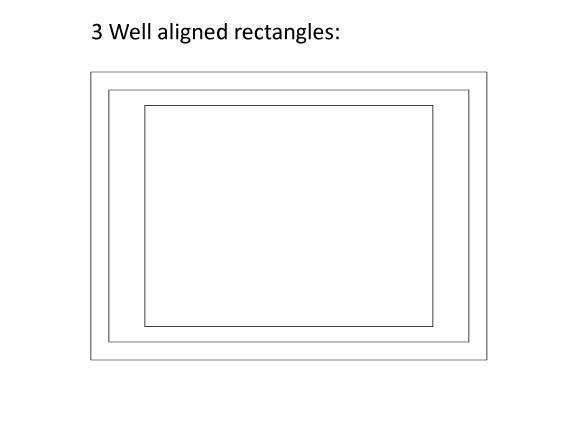
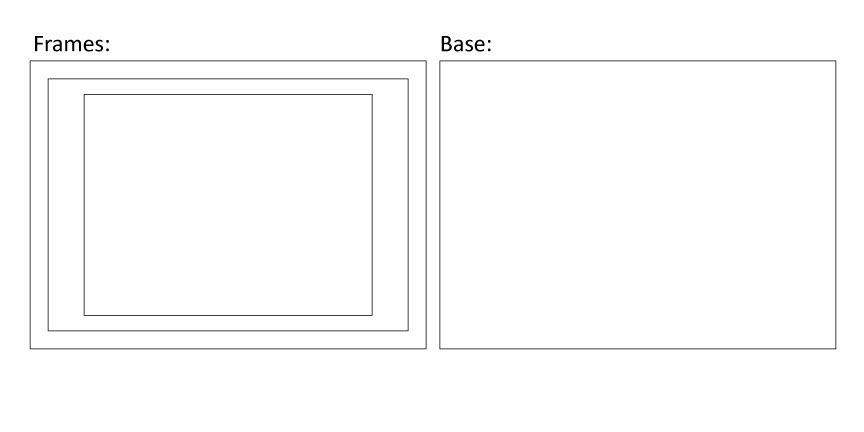
Once you have chosen the dimensions of your final piece and the printing block that you will use, it's time to draw a 3 well measured rectangles. The process is simple so use the software of your choice, or the software that you commonly use with the laser cutter (Inkscape, Corel Draw and Illustrator are common examples).
In a few words: you need to draw 3 rectangles, one that is the size of your block, one that is the size of your paper and one that is half an inch bigger than the paper. Then you align them vertically and horizontally.
Here is a step by step in Adobe Illustrator.
- Carving block frame: Start by making a rectangle with the dimensions of your carving block. In Illustrator select the Rectangle Tool, click on the art board once and enter the Width: 4in and the Height: 3.07in in the pop up dialog box.
- Paper frame: make another rectangle with the dimensions of the paper you will be printing on. Don't worry about alignment for now. Select the Rectangle Tool, click anywhere on the art board and enter the Width: 5in and the Height: 3.5in in the pop up dialog box.
- Base: make another rectangle that is 0.5 in (1.27cm) bigger than the previous one in both width and height. In this case Width: 5.5in and Height: 4in.
- Align: with the Selection Tool select the 3 rectangles. Change the fill color to none and then go to the Align Objects panel and click on Horizontal Align Center and Vertical Align Center
Our file is almost ready. Now we need to copy and paste the biggest rectangle, that will be our base. In my case I also need to select the color and use a stroke size of 0.001 points. But this will vary depending on the machine that you are using.
Cut Your Pieces:
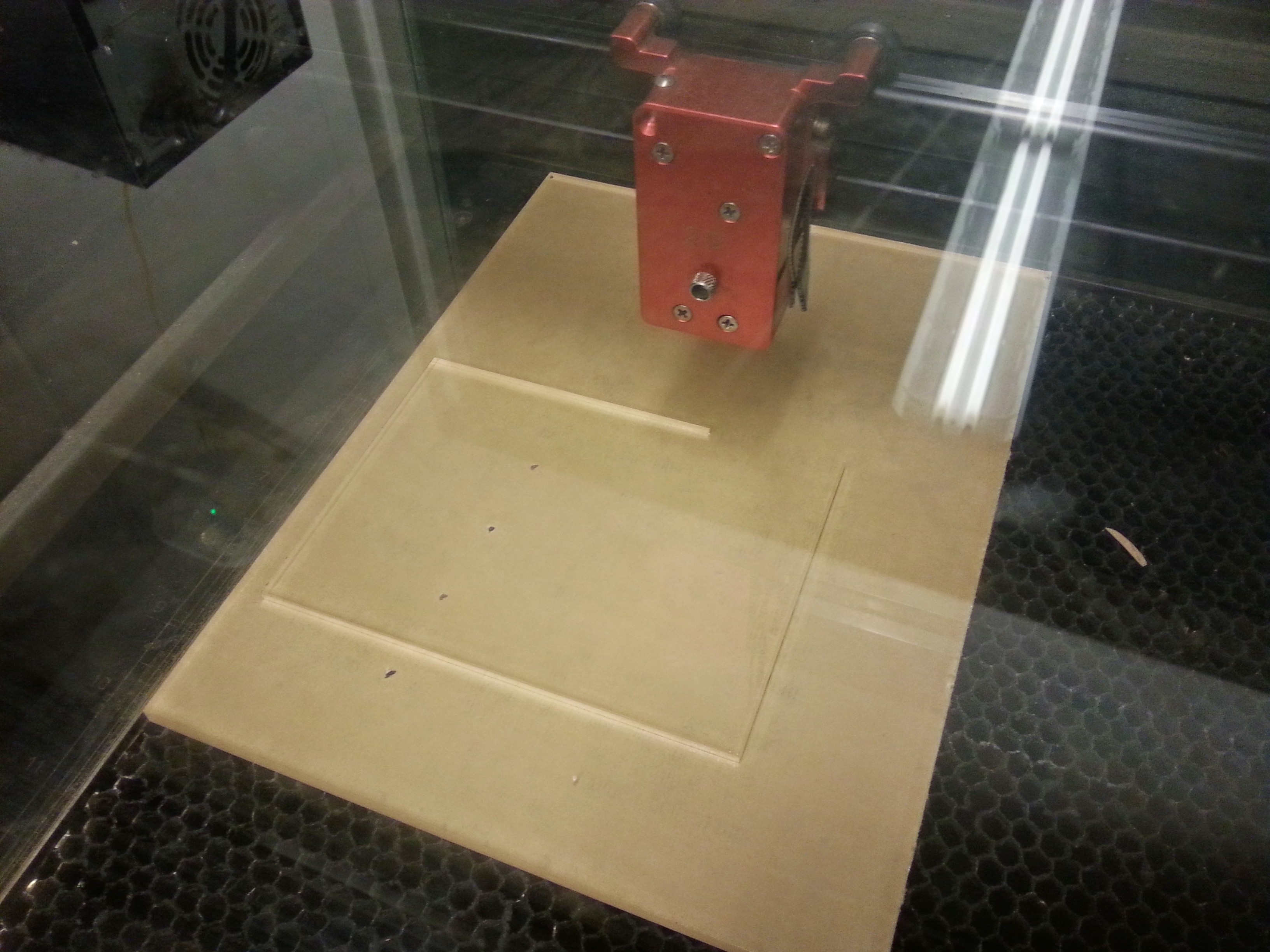
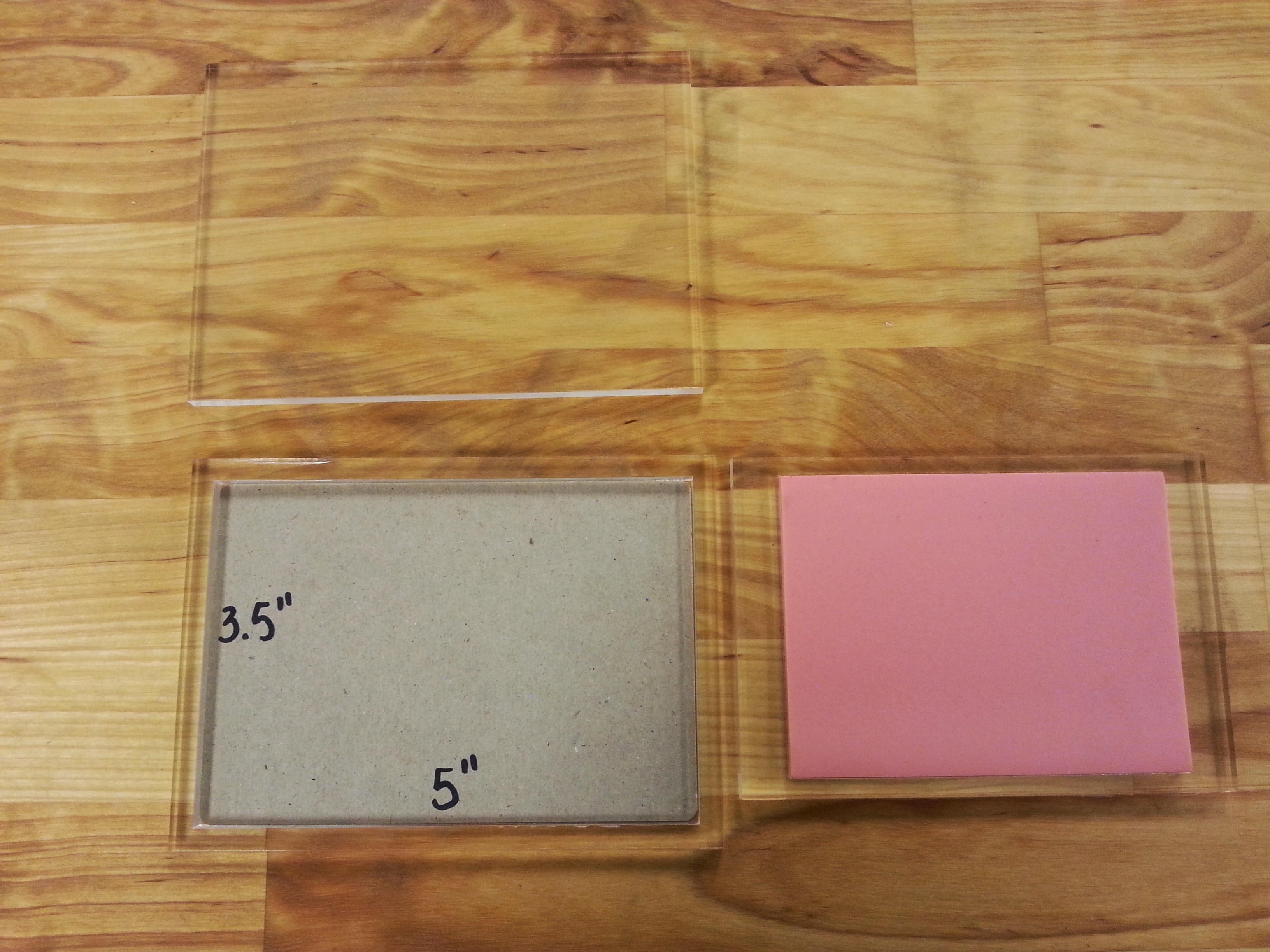
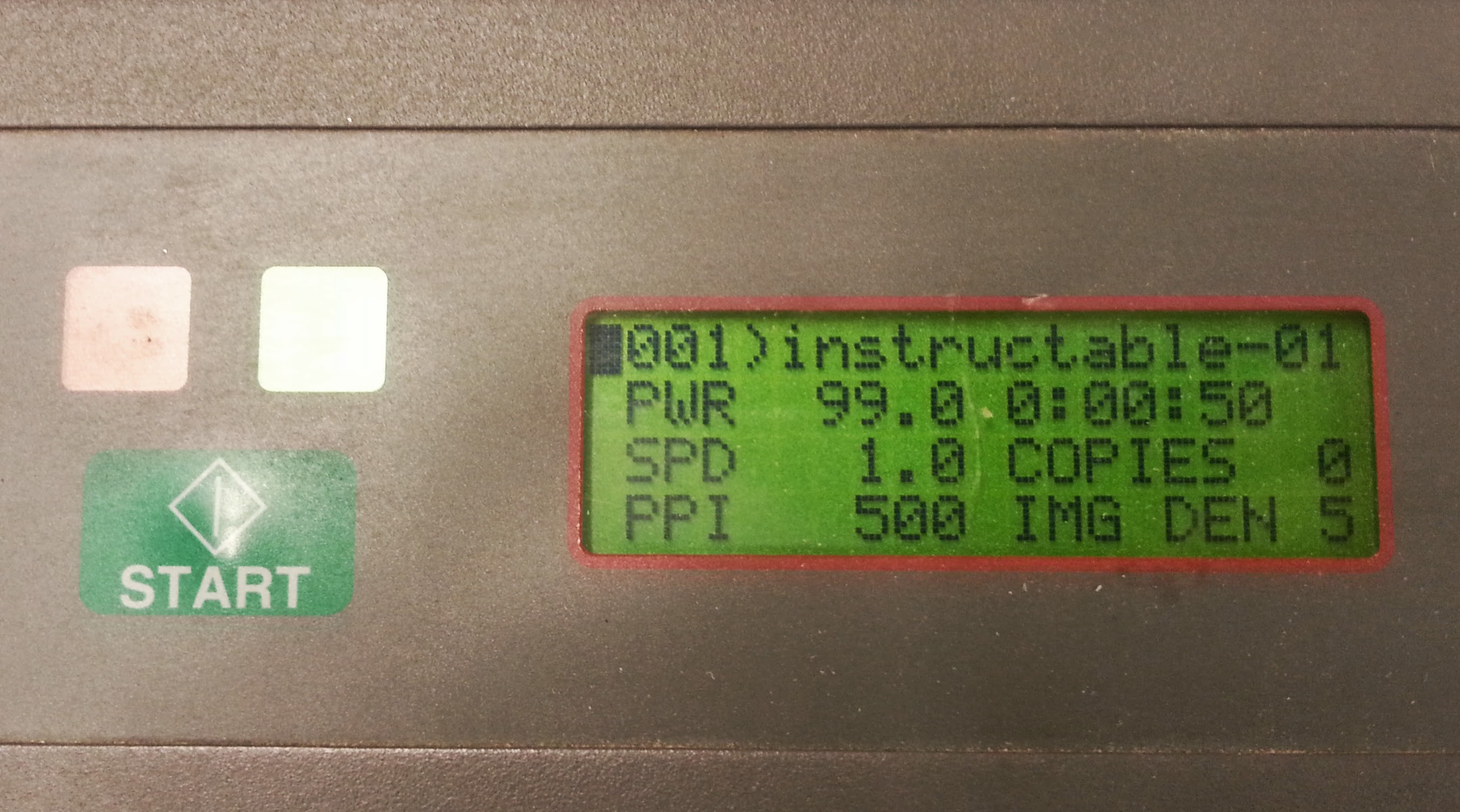
Settings:
I have access to a Universal X-660 (an old work horse) and I can cut directly from Illustrator. Your specific settings may vary. I use 99% power and 1% speed to cut 0.20in (5mm) acrylic, your mileage may vary.
You will end up with 2 frames, one base rectangle and a little rectangle. Set the little one aside for now.
Bond the Big Frame to the Base:
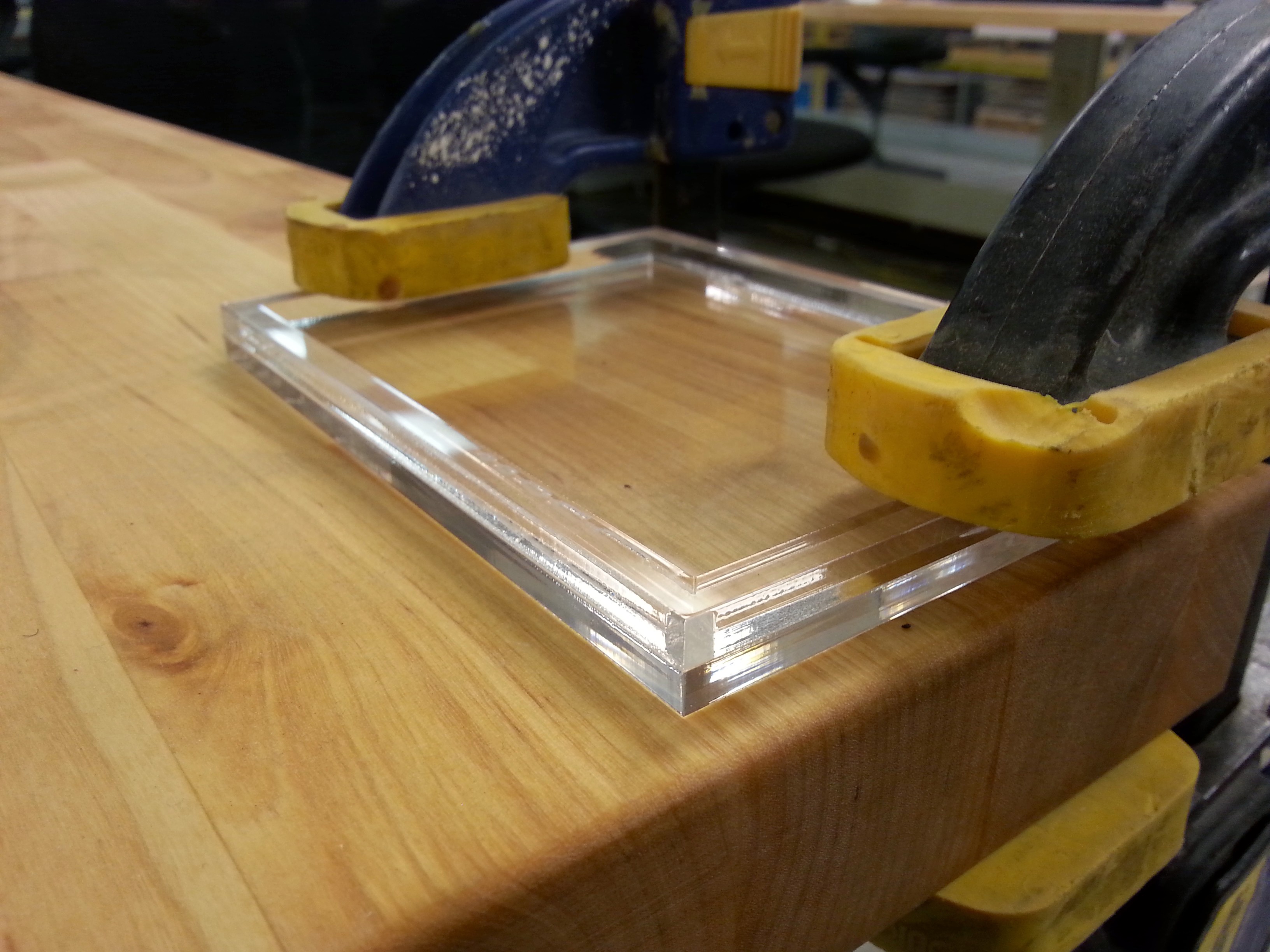

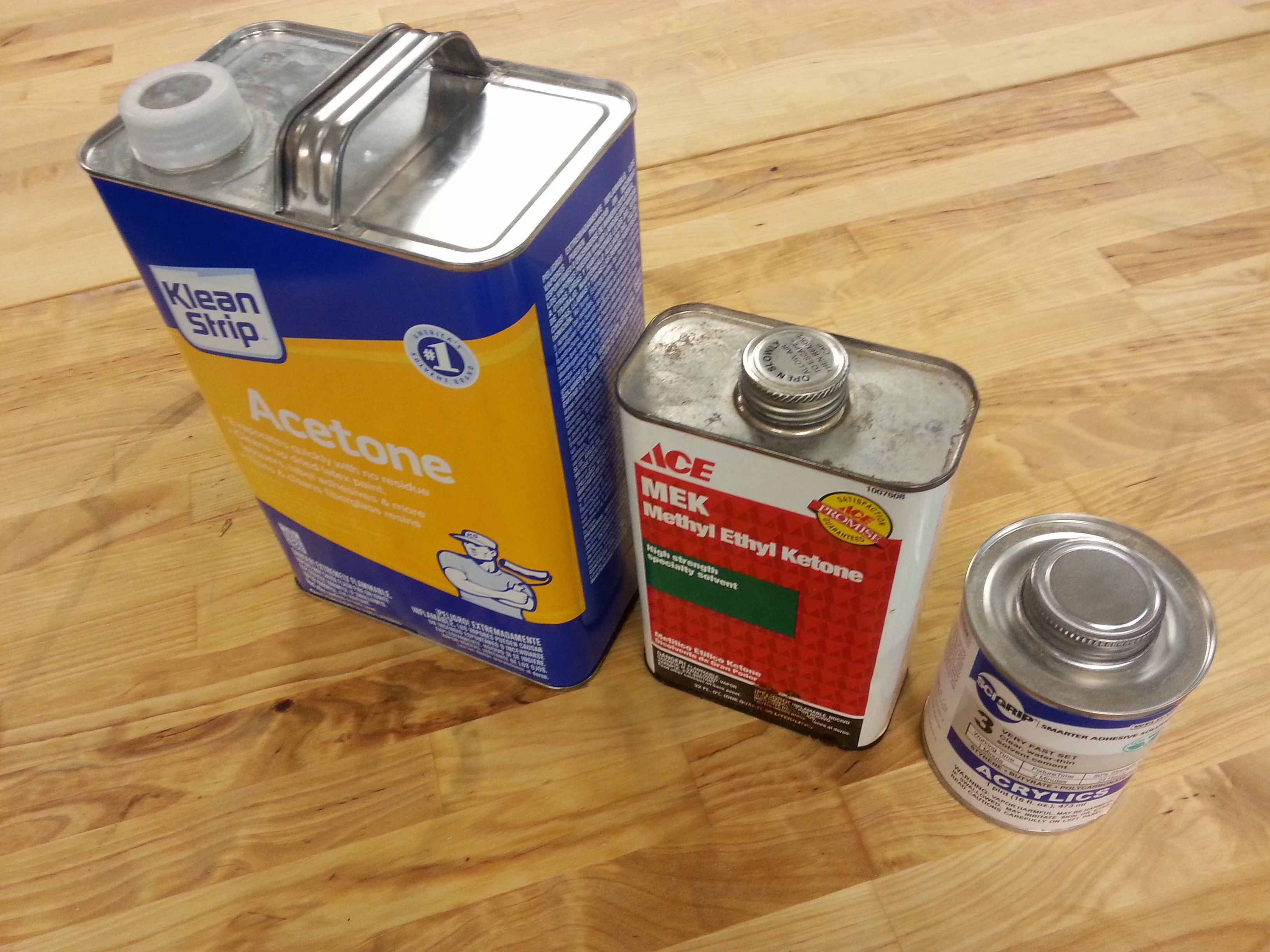
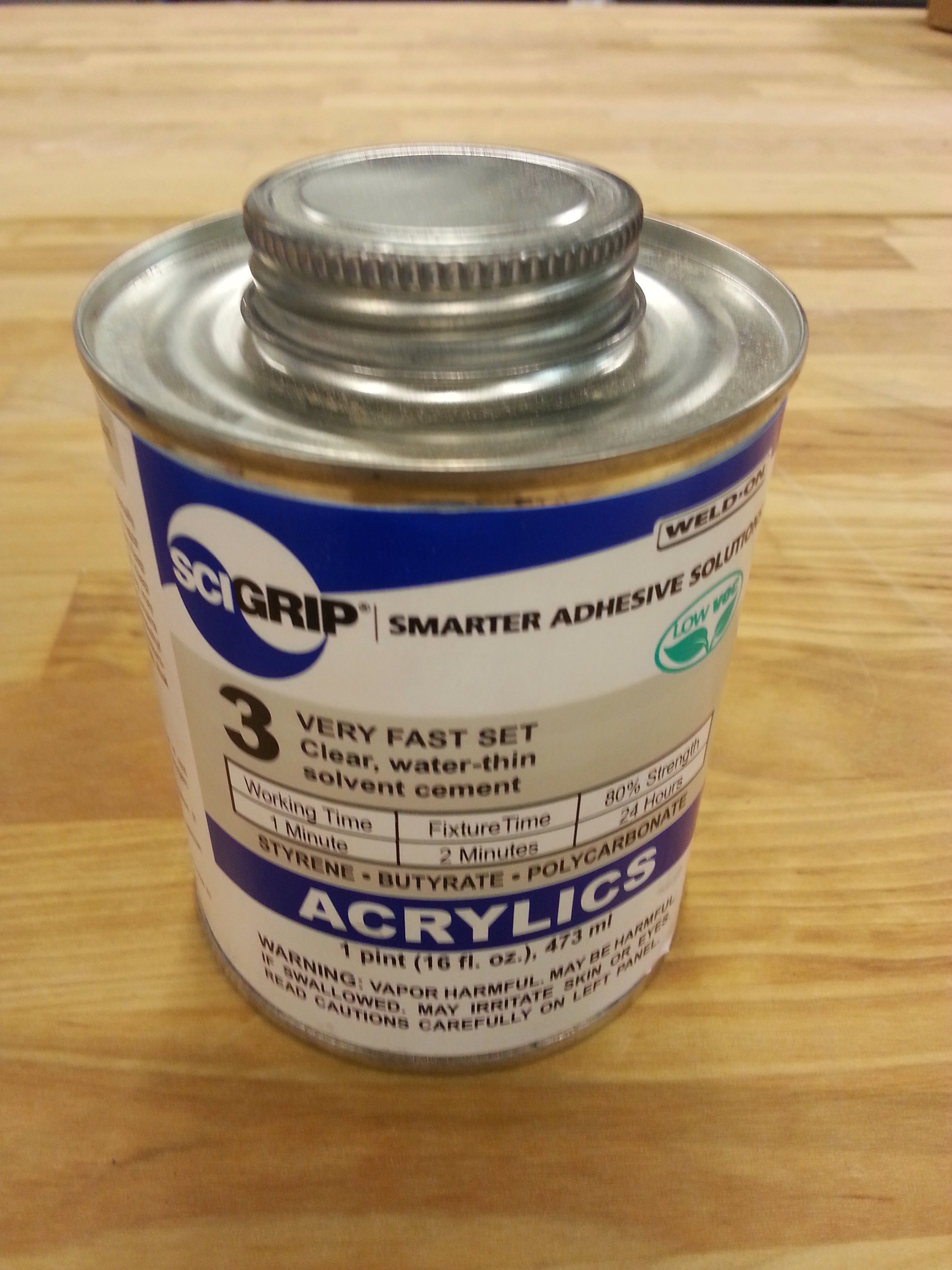
On bonding acrylic:
Permanently bonding acrylic is really easy if you use a solvent. There are some commercially available acrylic bonding cements but you can use plain acetone. I have used acetone, MEK (Methyl Ethyl Ketone), and specially formulated solvents like the one pictured. The main advantage of the latter is that the curing time is really short. The performance of MEK is pretty similar to acetone, perhaps a bit better.
The trick is to clamp the parts before you apply the solvent. Apply it to the edge of the parts and you'll see it being drawn in by capillary action. It is rather amusing.
Doing it:
Clamp the pieces, make sure they are reasonably aligned and apply just a little bit of solvent to the inside edges. If you are using acetone let it sit for about 20 minutes.
With acetone and MEK little cracks may occur but this is OK.
Now we are ready to use our jig!
Using It!
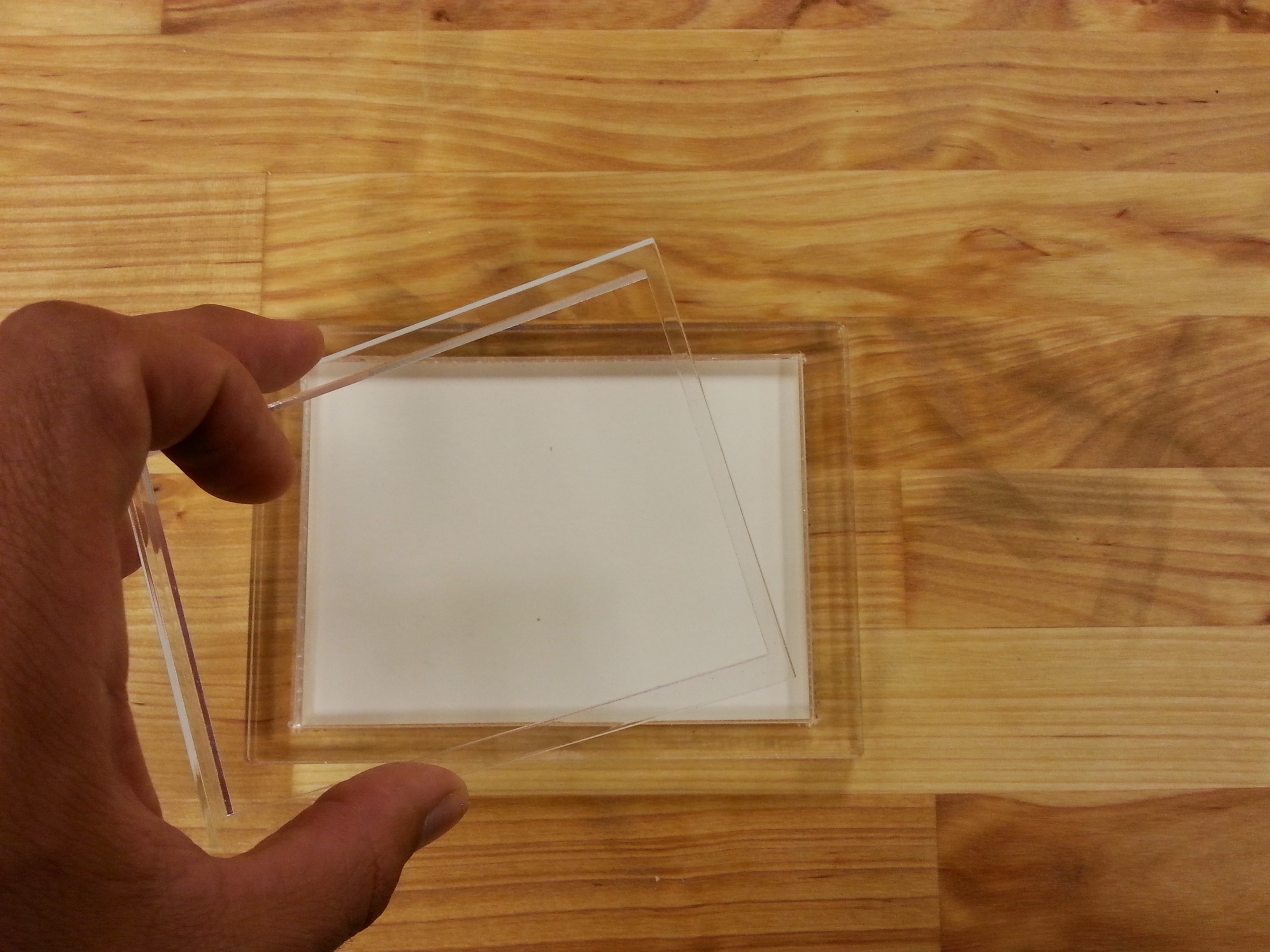

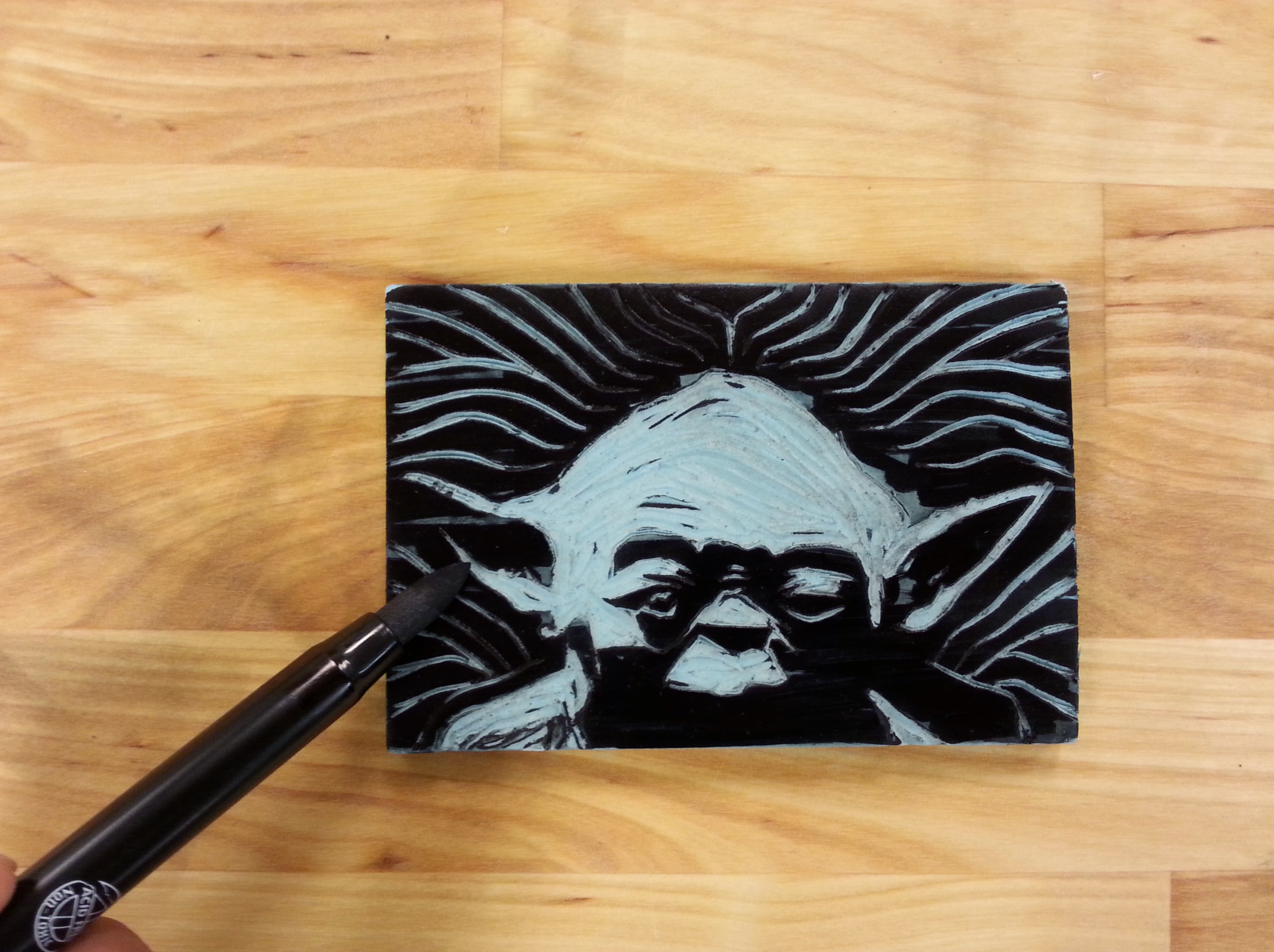
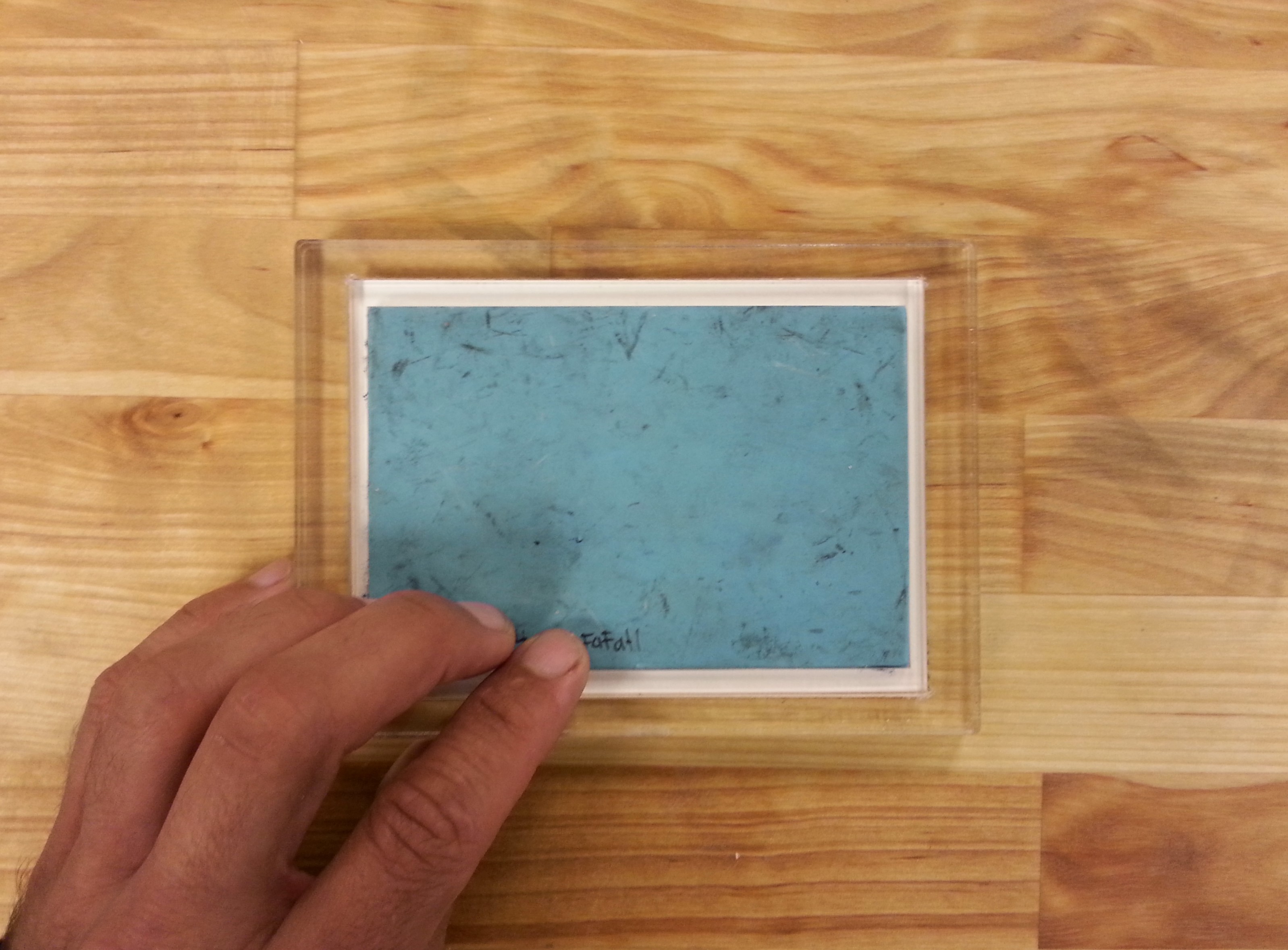
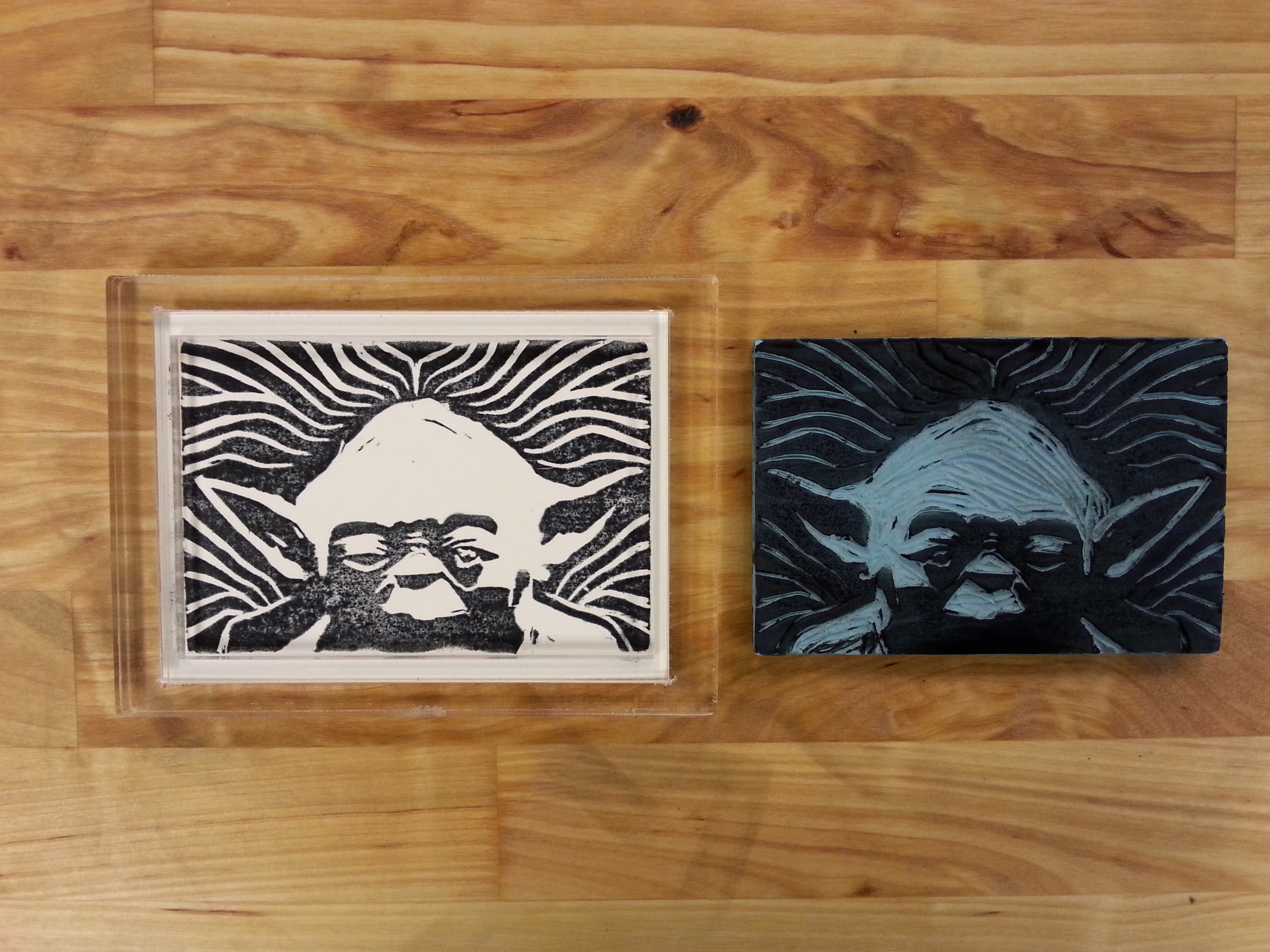
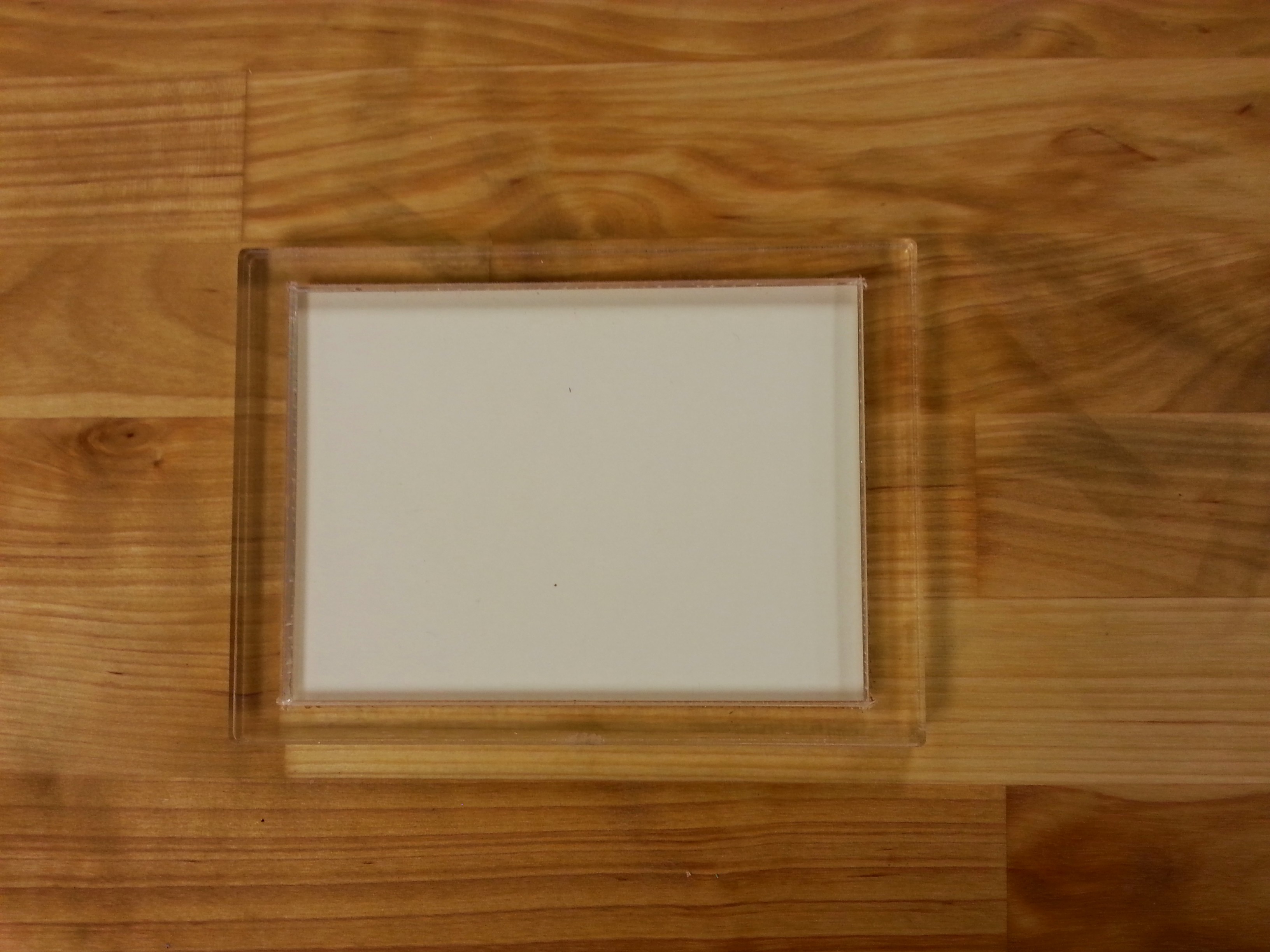
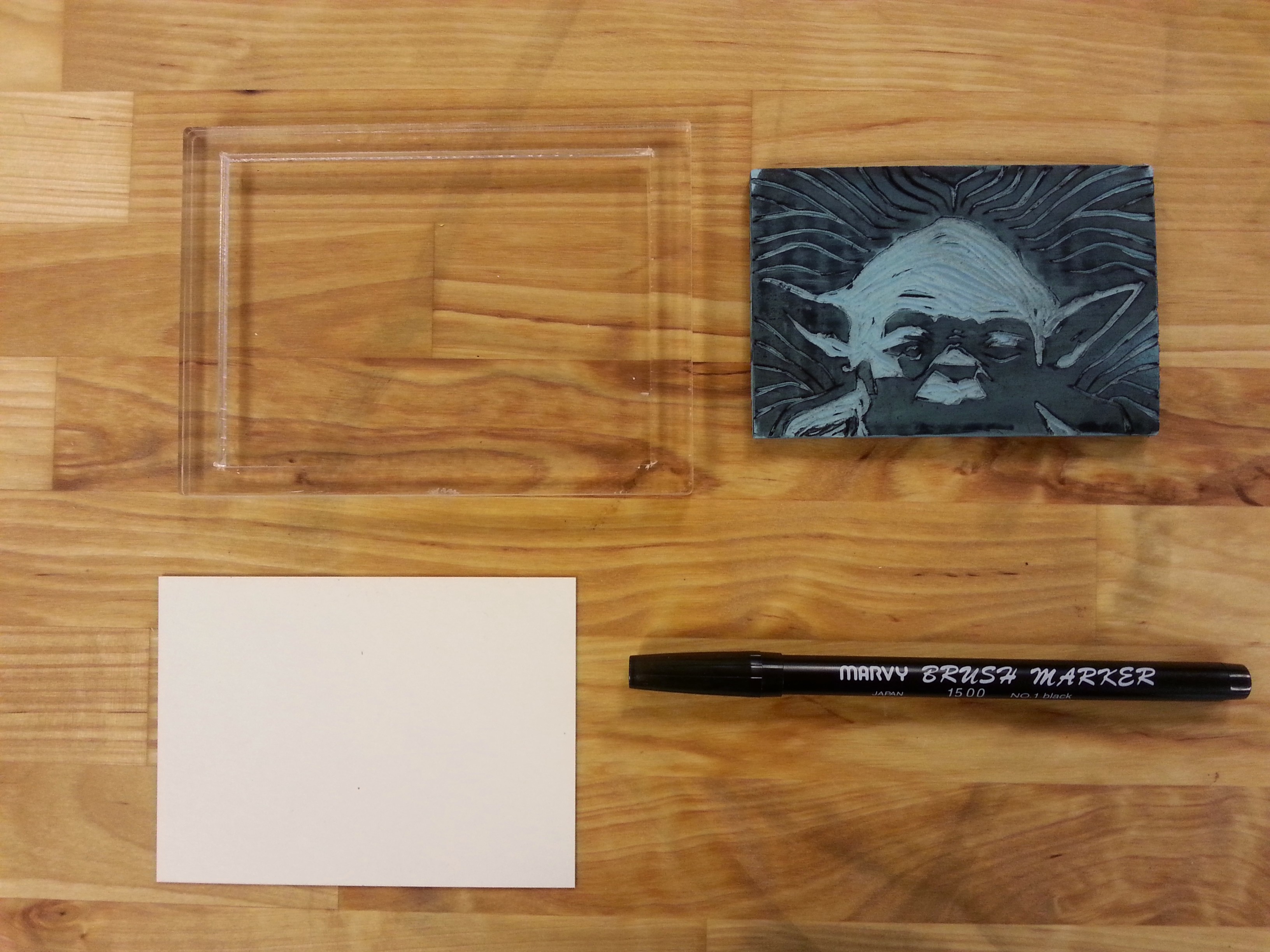
Ready? Let's go:
- Place the paper inside the jig.
- Put the small frame on it.
- Apply ink to the carving block (I'm using a marker in the example pictured, it's lazy but it works).
- Place the block in the frame and apply pressure around the entire surface of your block.
You probably had it figured out by now. Anyway, what I like about this method is that I can produce a lot of nicely framed prints without thinking too much about aligning the printing block. Because the tolerances are pretty tight it is possible to reapply ink when the print doesn't turn out so good on the first try. I've found this is really hard to do with other indexing methods.
Going Further:
Now that you know the basic technique (measuring and cutting the frames and bonding a couple of pieces) I'm going to suggest some variations.
Printing on Wood
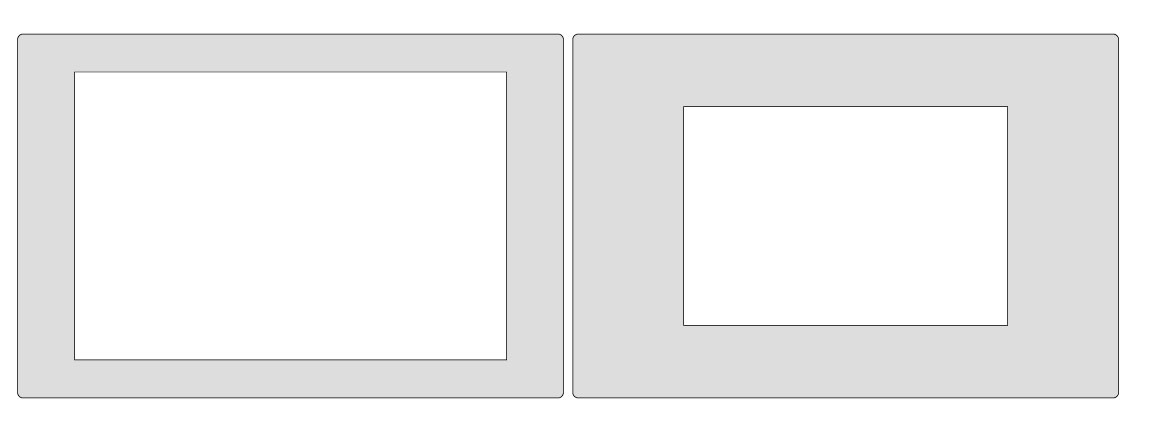
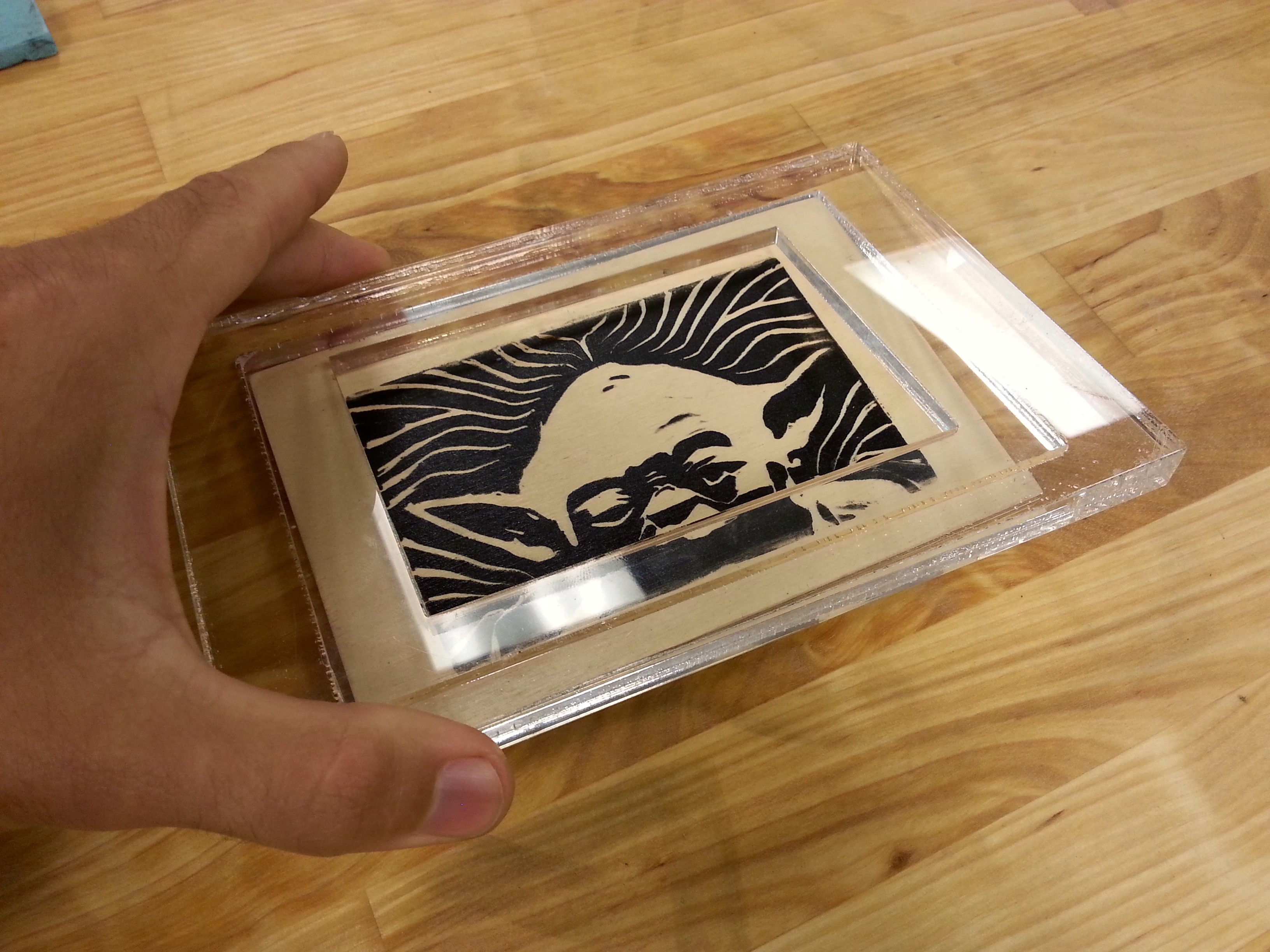
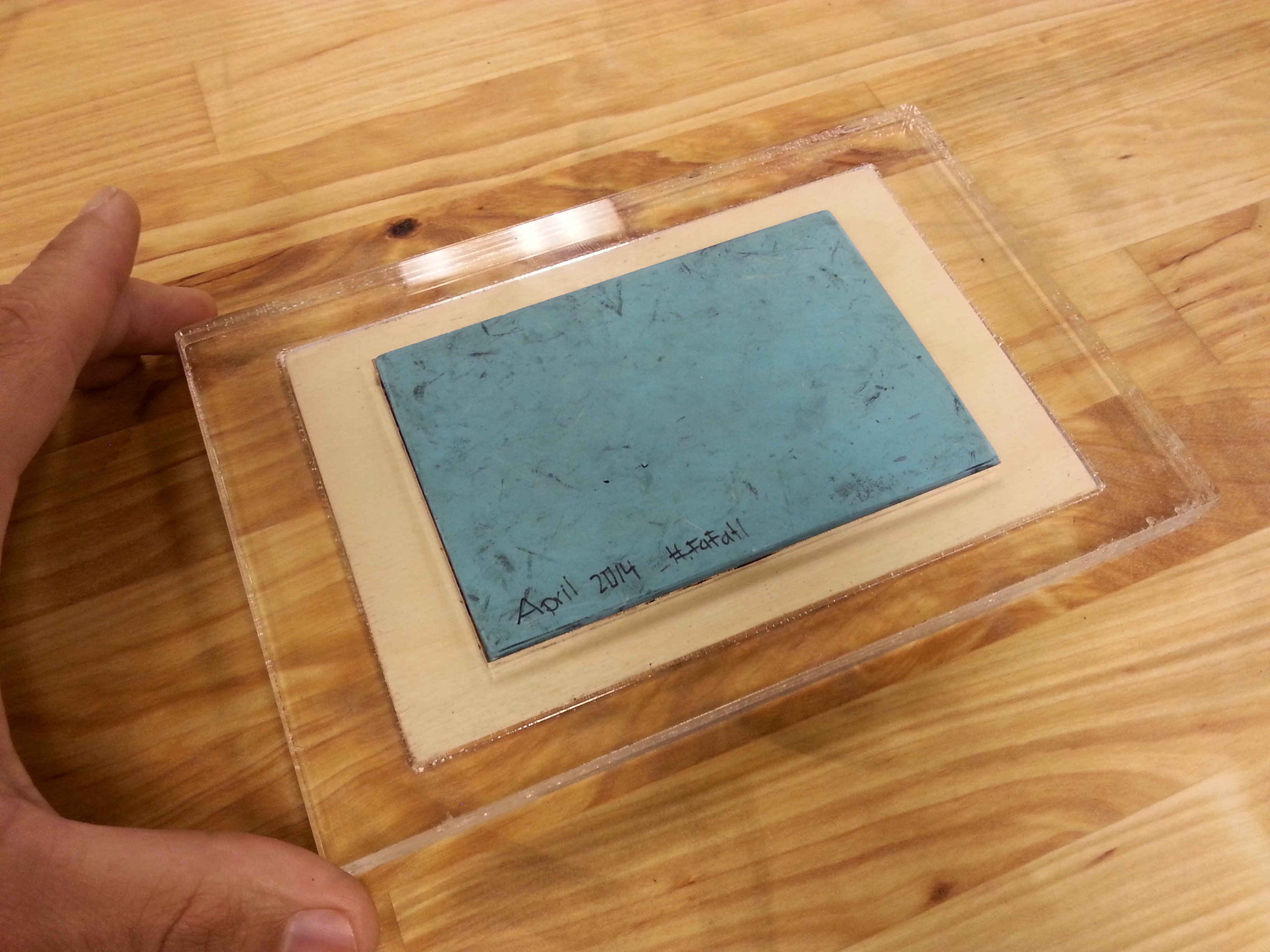
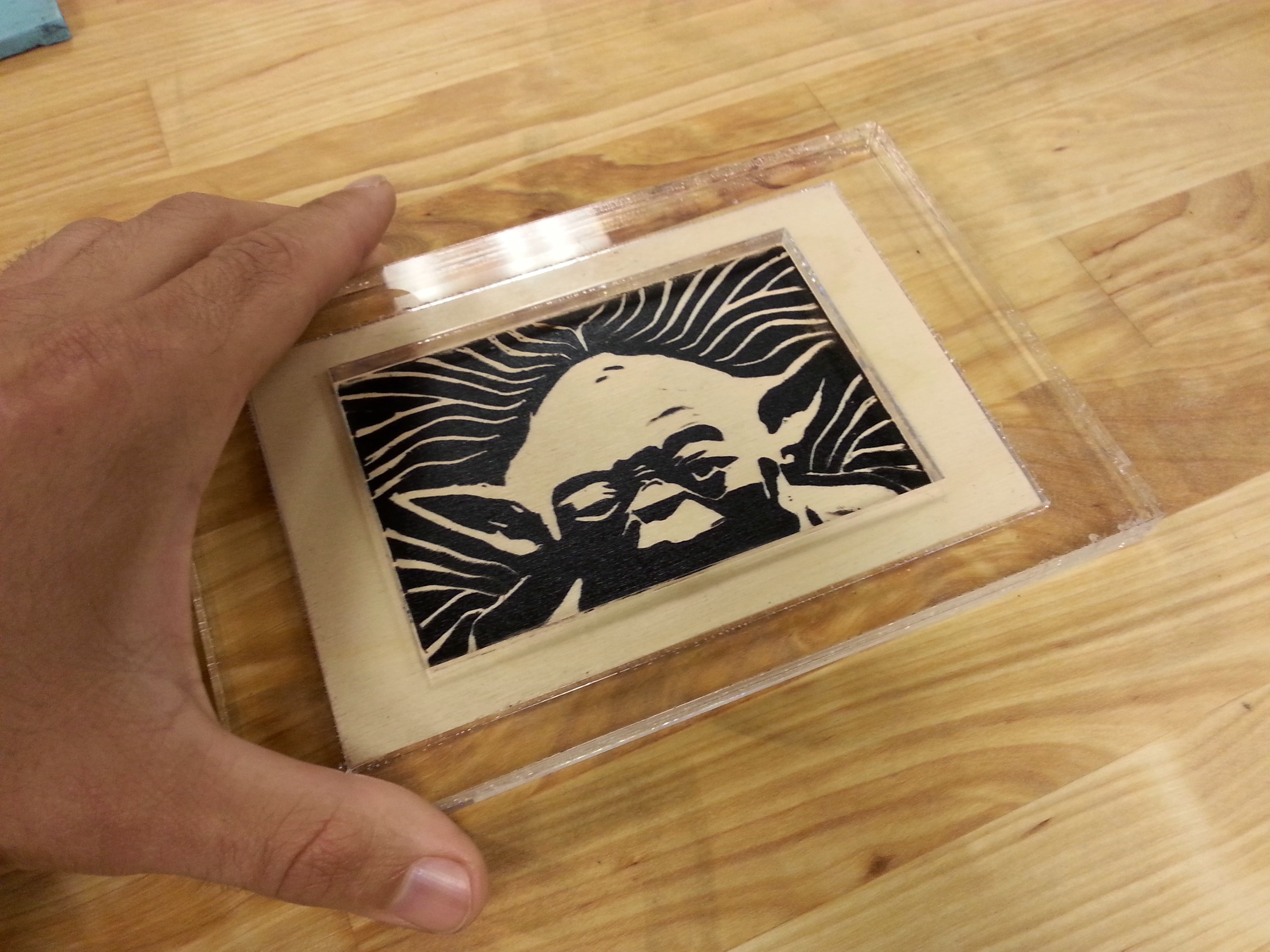
For printing on wood you only need to cut 2 frames (shaded grey in the picture). Both pieces have the same outside dimensions but one of them fits the carving block and the other one fits the work piece.
When printing on wood I have obtained the best results using rubber like materials (such as Speedball brand "Speedy Carve" or actual rubber stamps) and water based printing Inks.
Paper on Top
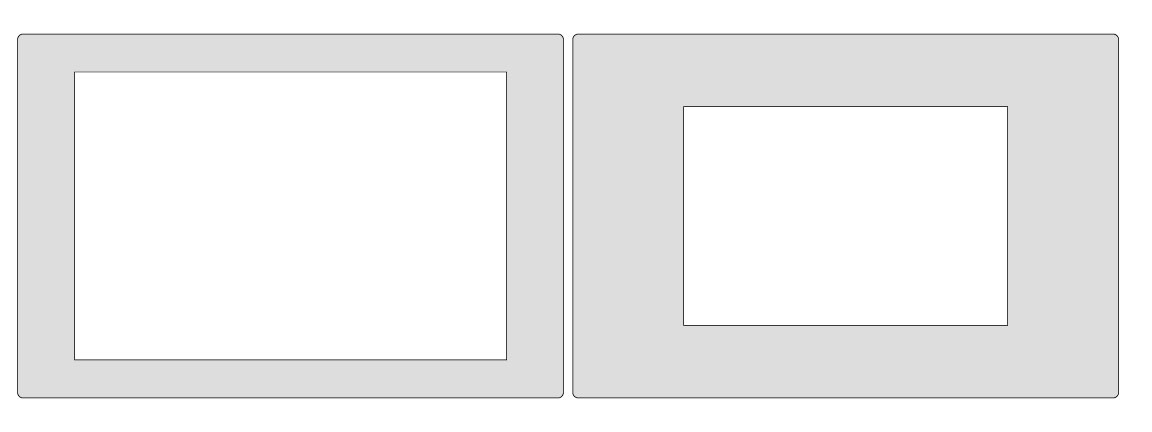
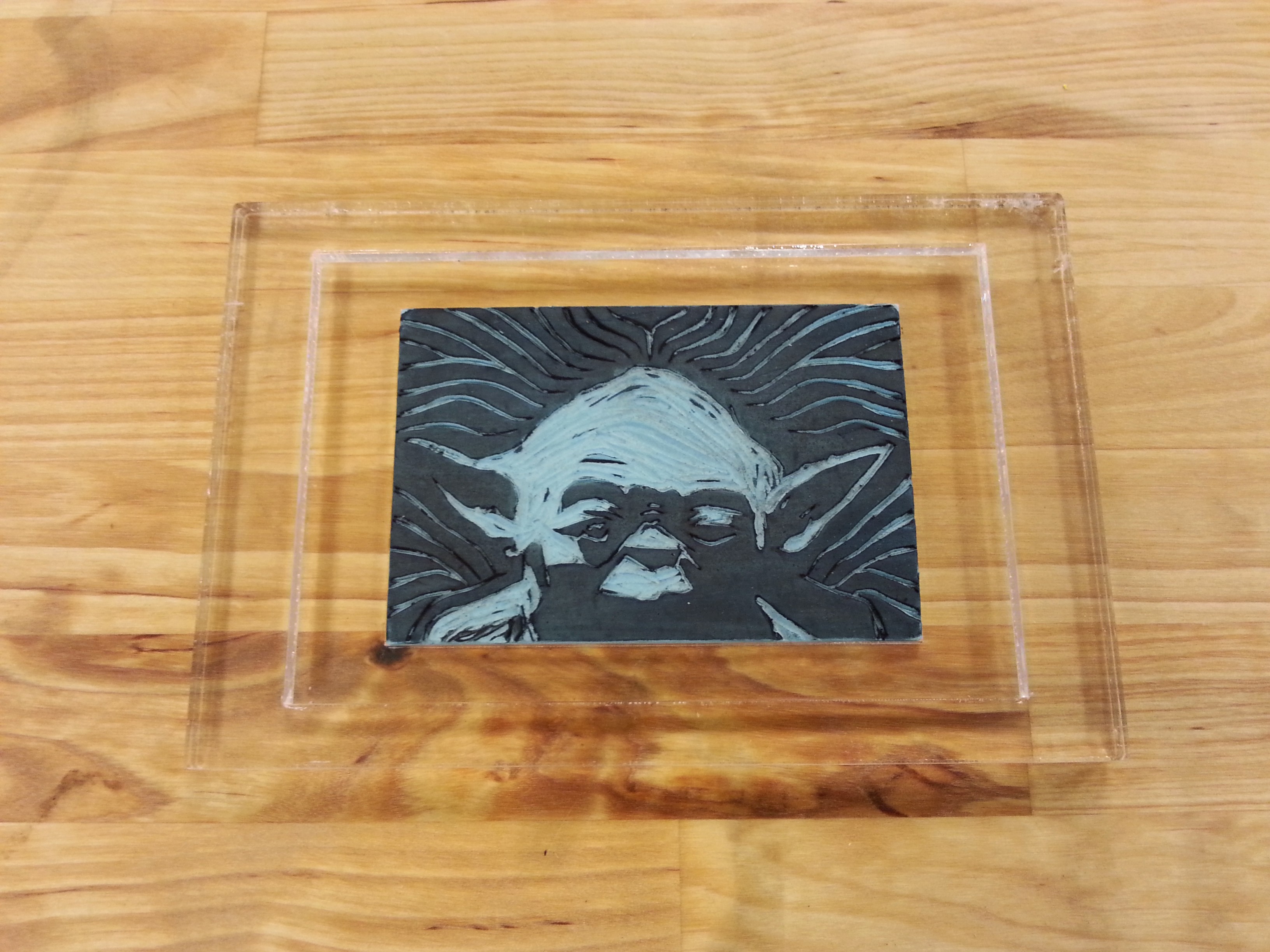
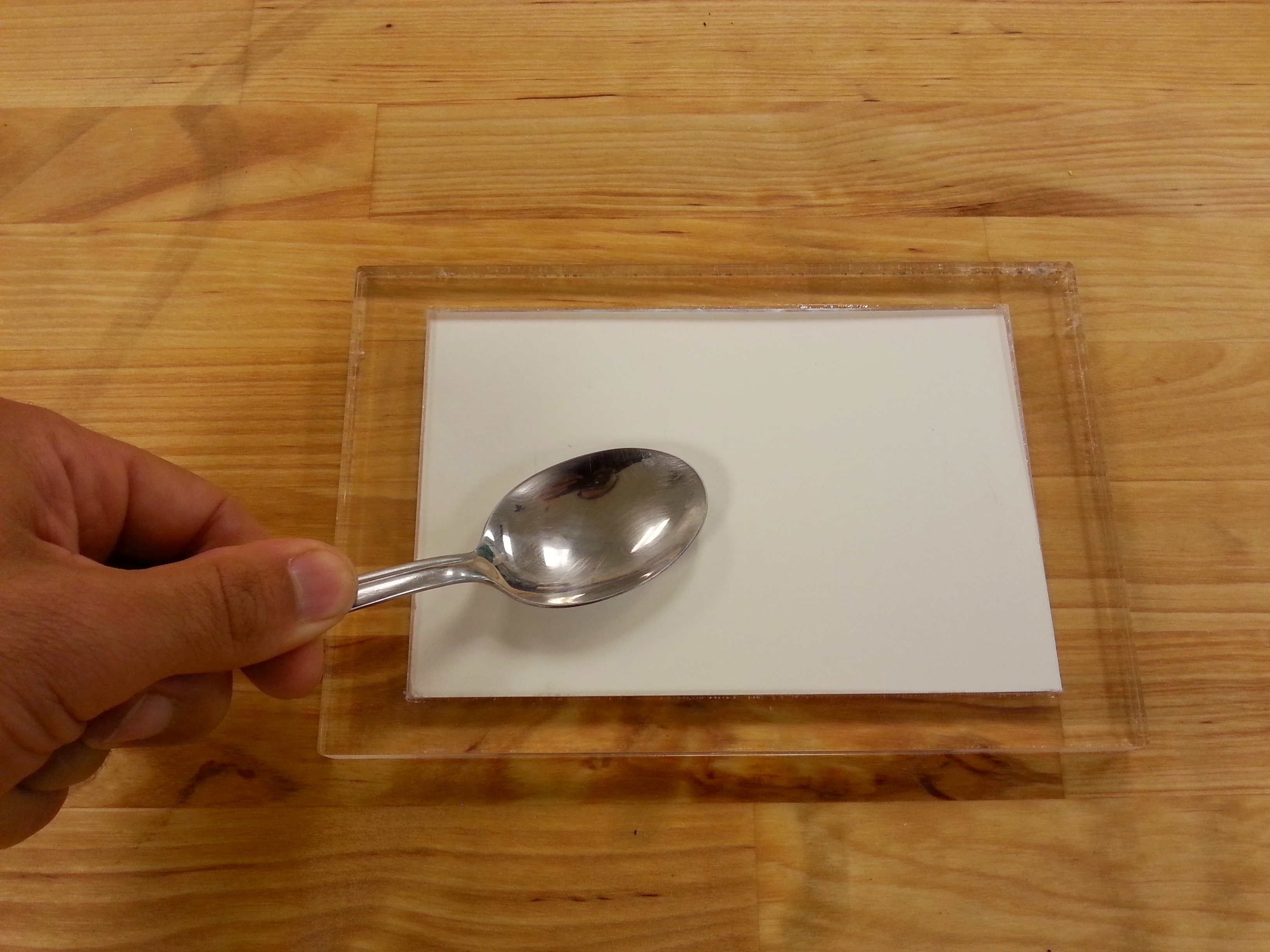
If your printing block is made out of harder materials (such as wood, linoleum or metal) you will get better prints by placing the paper on top and using a burnishing tool (very often the humble but useful house variety spoon). The jig will be the same as in the previous step, just two frames that share the same outside dimensions.
You might have to add a spacer (or thinner acrylic) if your block doesn't have a similar thickness to the base.
Patterns:
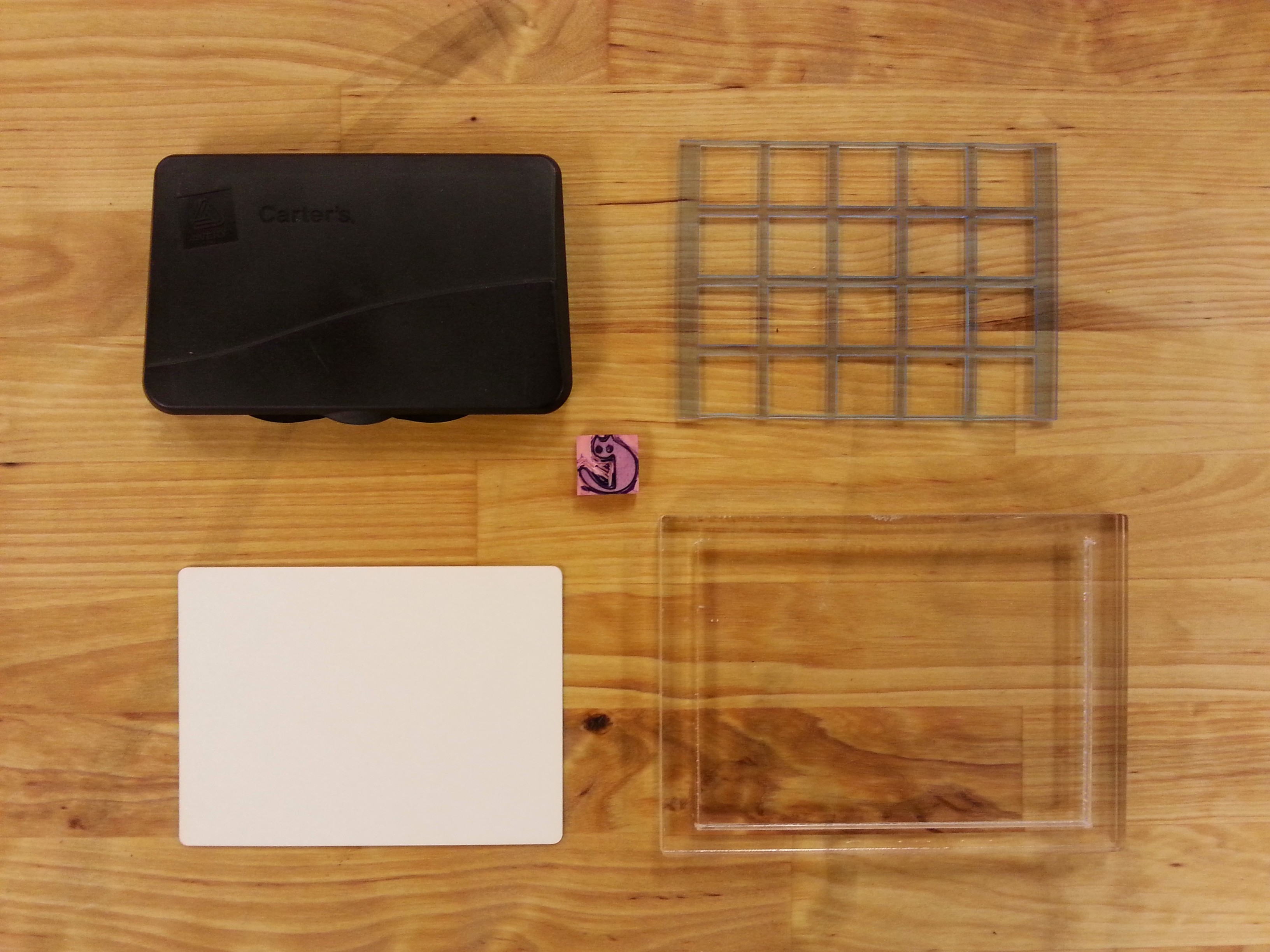
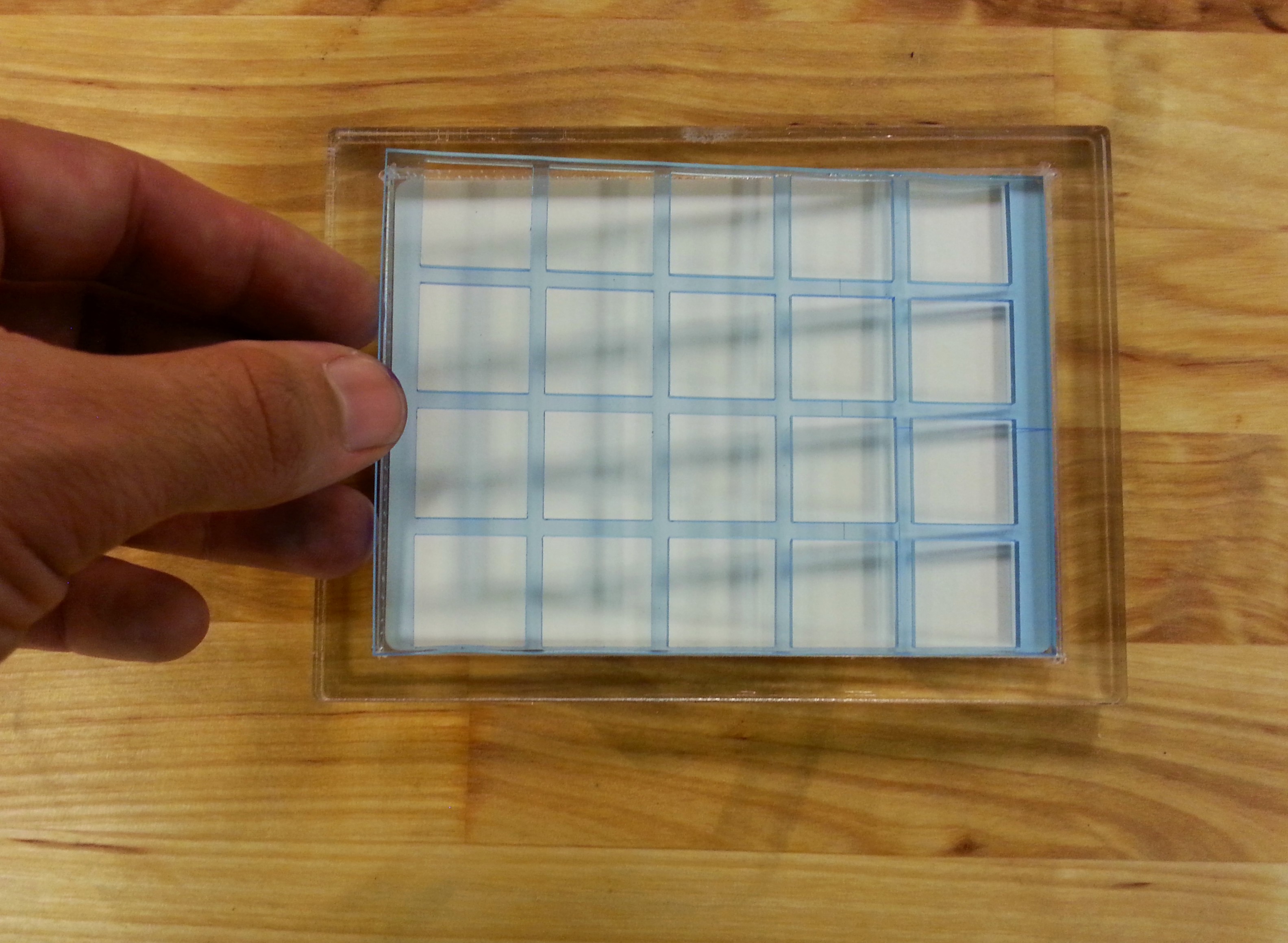
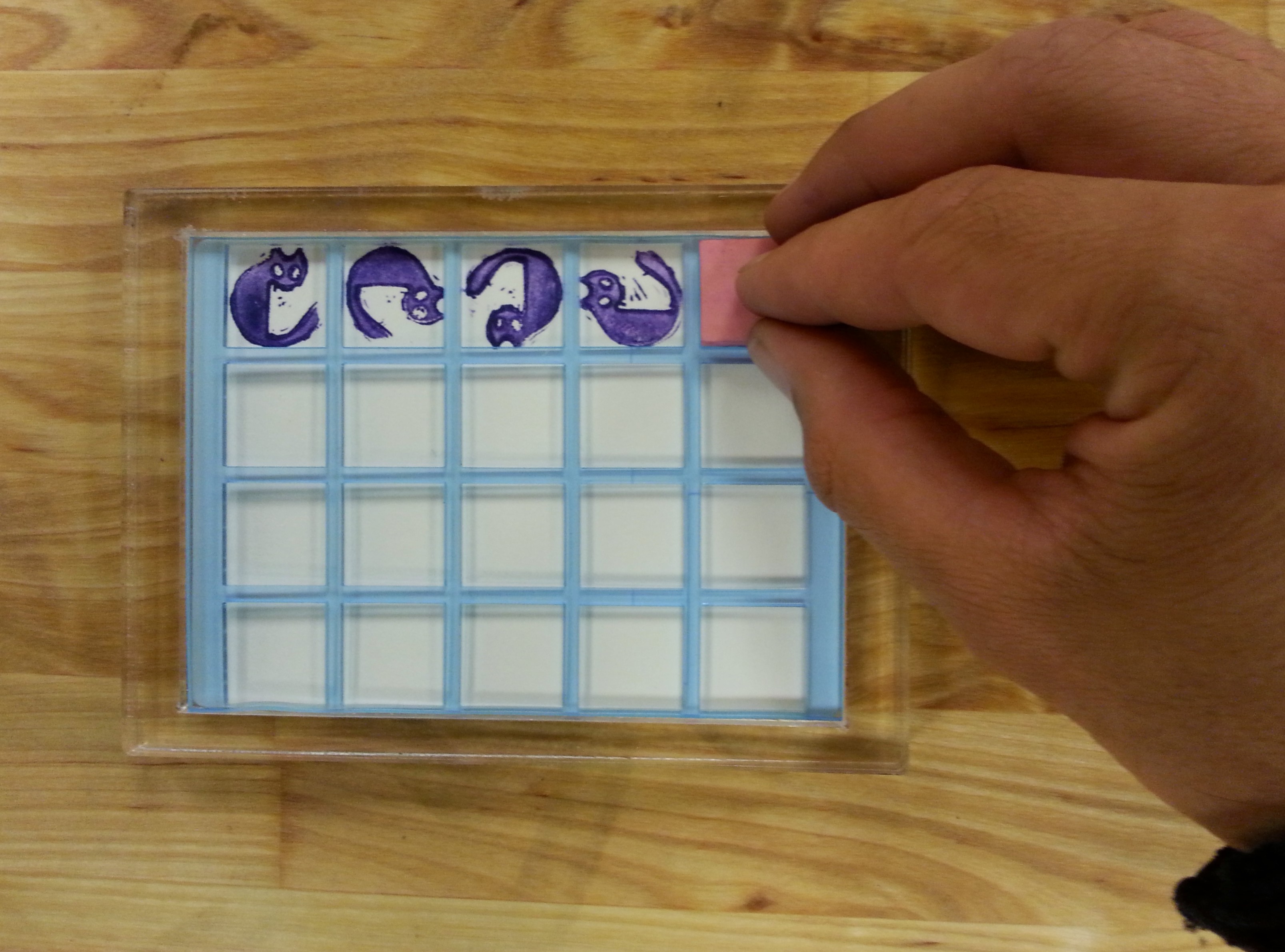

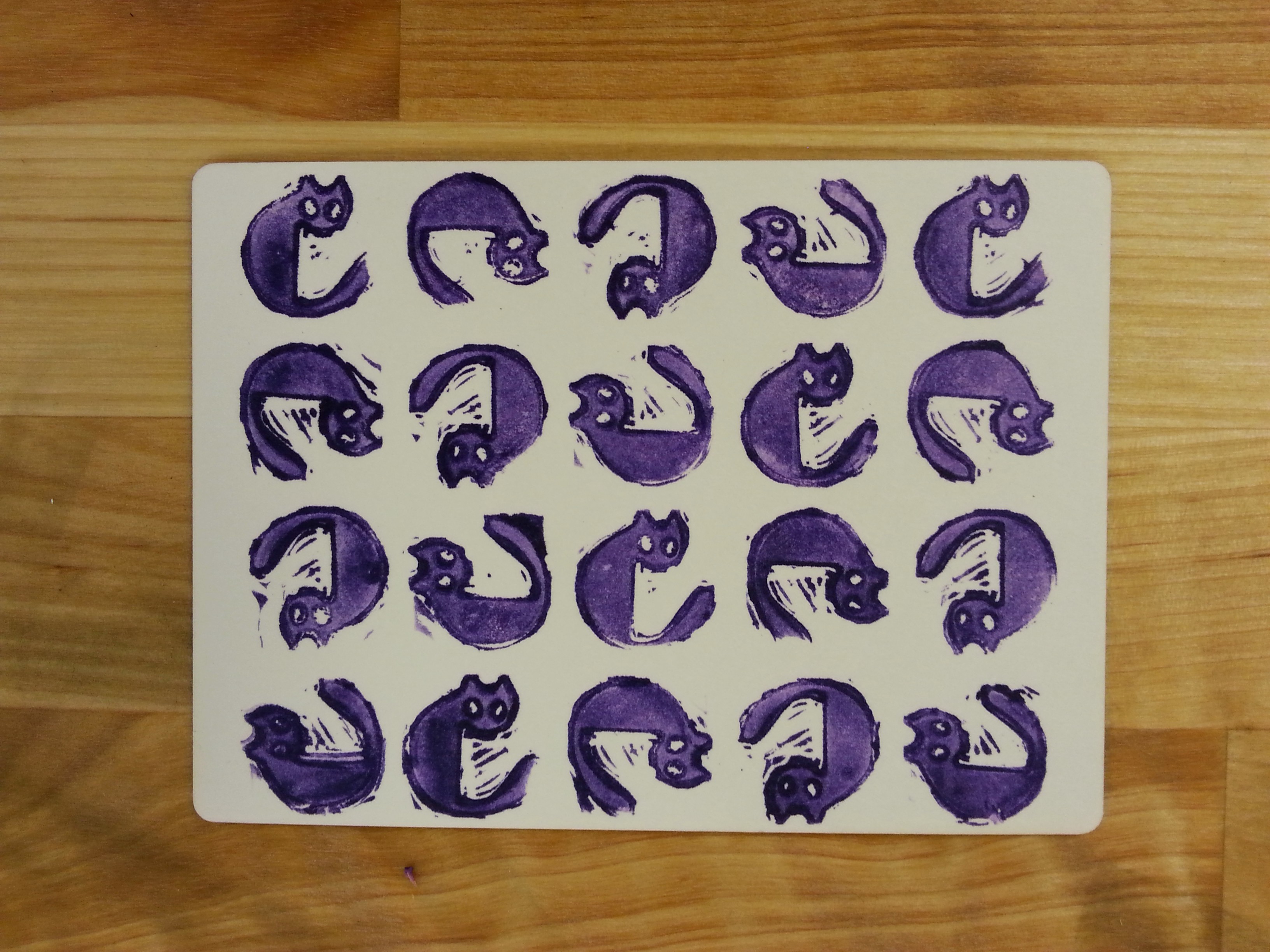
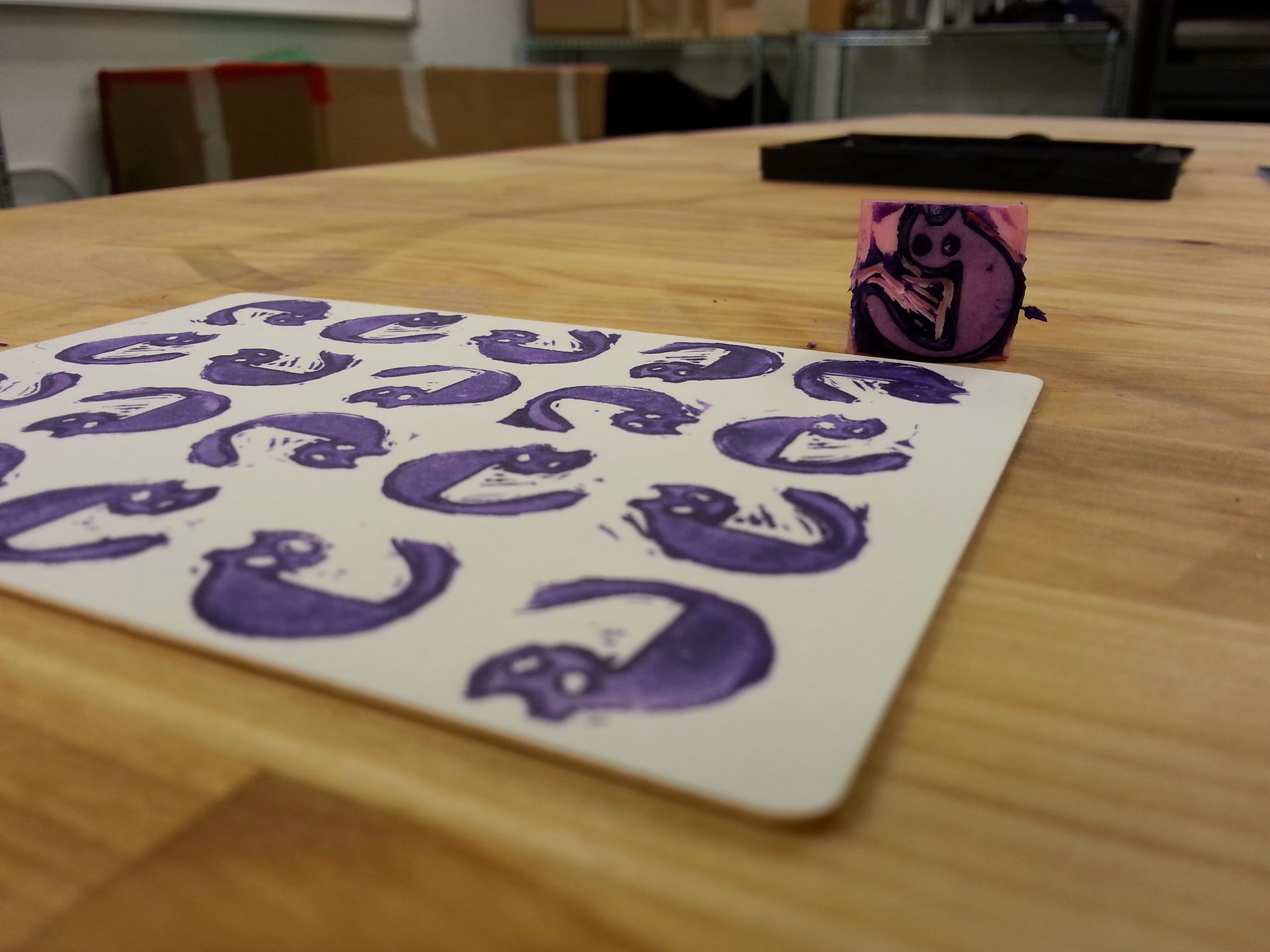
To create patterns cut a template that is the size of your paper. I decided to cut a grid and a square stamp in this example but really you could choose any shape you want. I also used 2.5mm (0.09 in) thick acrylic because I had a hard time getting the stamp off the template when I used 5mm.
Place the template on top of the paper and use it to guide your stamping. I rotated mine 90 degrees each time to make it look more interesting.
I hope this Instructable gave you some ideas and inspired you to play with lasers (I'm sure Yoda would approve).
Now, go forth and print nicely framed pictures of cute cats!